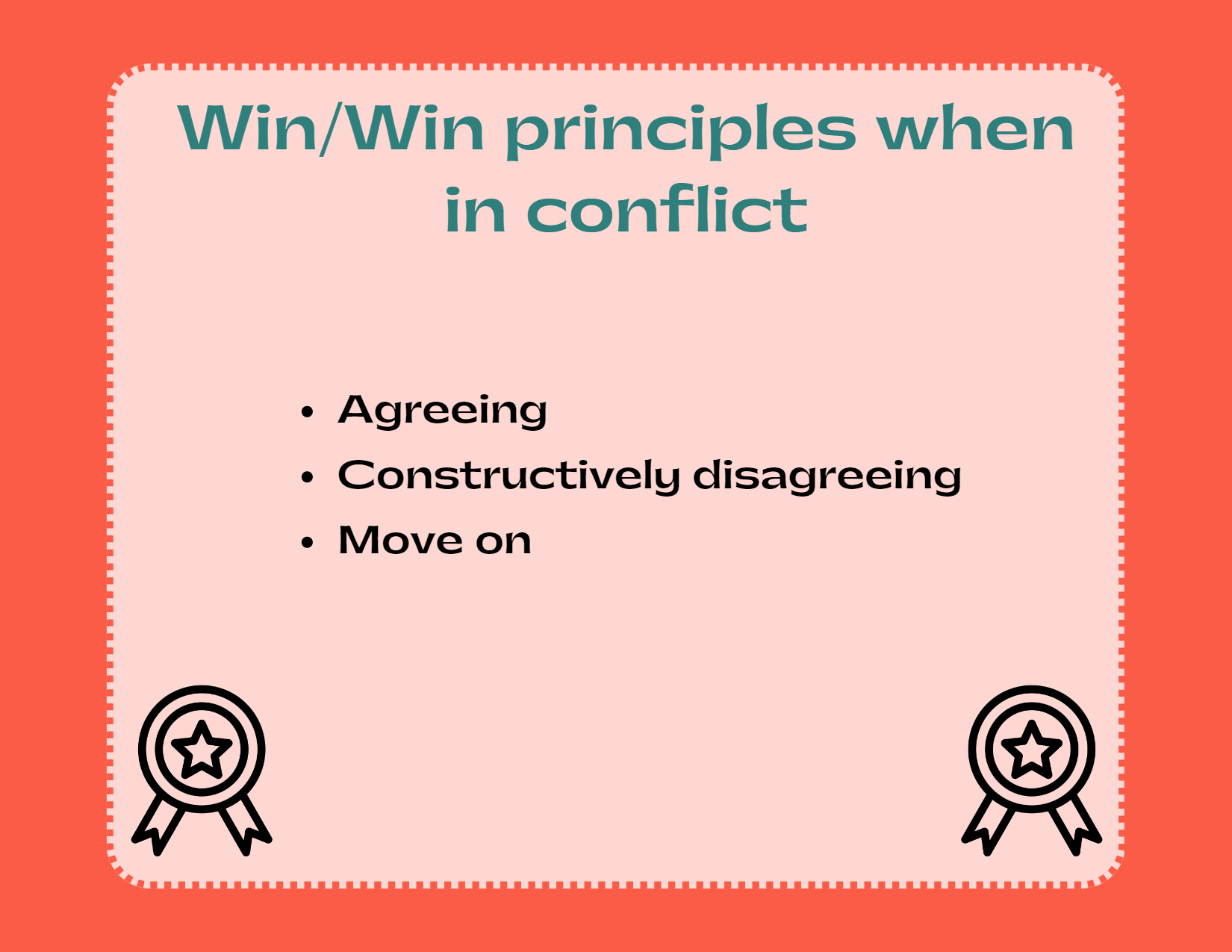
Agreeing
If you like someone’s suggestion, say so because, if you say what you like, as well as why you like it, you convey the value within the idea. This adds clarity and reinforcement to the idea, both of which are helpful in resolving conflict.
|
Say: |
I like your idea because ………. |
Constructively Disagreeing
If you don’t like the idea, say so in a way that does not close down the conversation but rather, provides a way to keep it going. This has three elements.
|
Like |
What I do like about your suggestion is…. |
|
But |
What I have a problem with, however, is … |
Move On
Now move on by explaining alternatives. Continue this to a point of agreement.
|
Move on |
How would it work if…? |
Example:
A lot of changes have taken place in your office. New equipment is coming in and space is at a premium. Bob has an idea about where to put a computer printer. He says: Why don’t we put the printer in the training room? This place is getting too cramped to work in.
Jaco replies: What I like about your idea is that it gives us some more usable office space. What I have a problem with is that it won’t be available if someone is using the training room. How would it work if we move some of these filing cabinets which we don’t use regularly into the training room and put the printer in their place?
How does this response measure up to our criteria?
|
Like |
What I do like about your suggestion is…. |
|
But |
What I have a problem with, however, is … |
|
Move on |
How would it work if …? |
The key goals for the win/win approach to resolving conflict are:
- Foremost, finding the best solution that most fully satisfies the needs of those involved.
- Secondly, if a resolution appears possible, preserve the relationship with the other person(s) so that the channels for future two-way communication will remain open.
Working through differences constructively in a conflict situation involves three steps:
- Step 1: Agree with what you like.
- Step 2: Say what you disagree with.
- Step 3: Explore alternatives.
Click here to view and download a handout that contains evaluating and developing disagreement statements that you can work through.